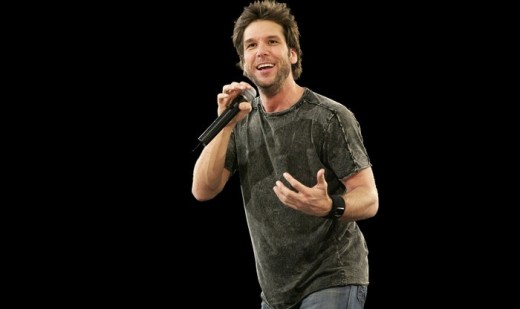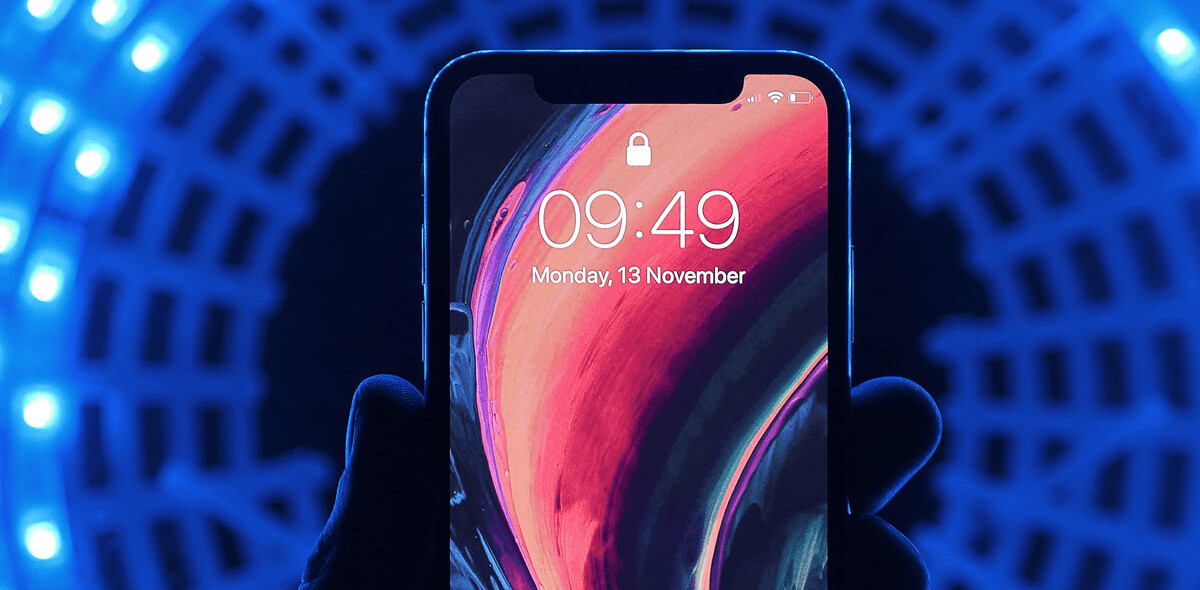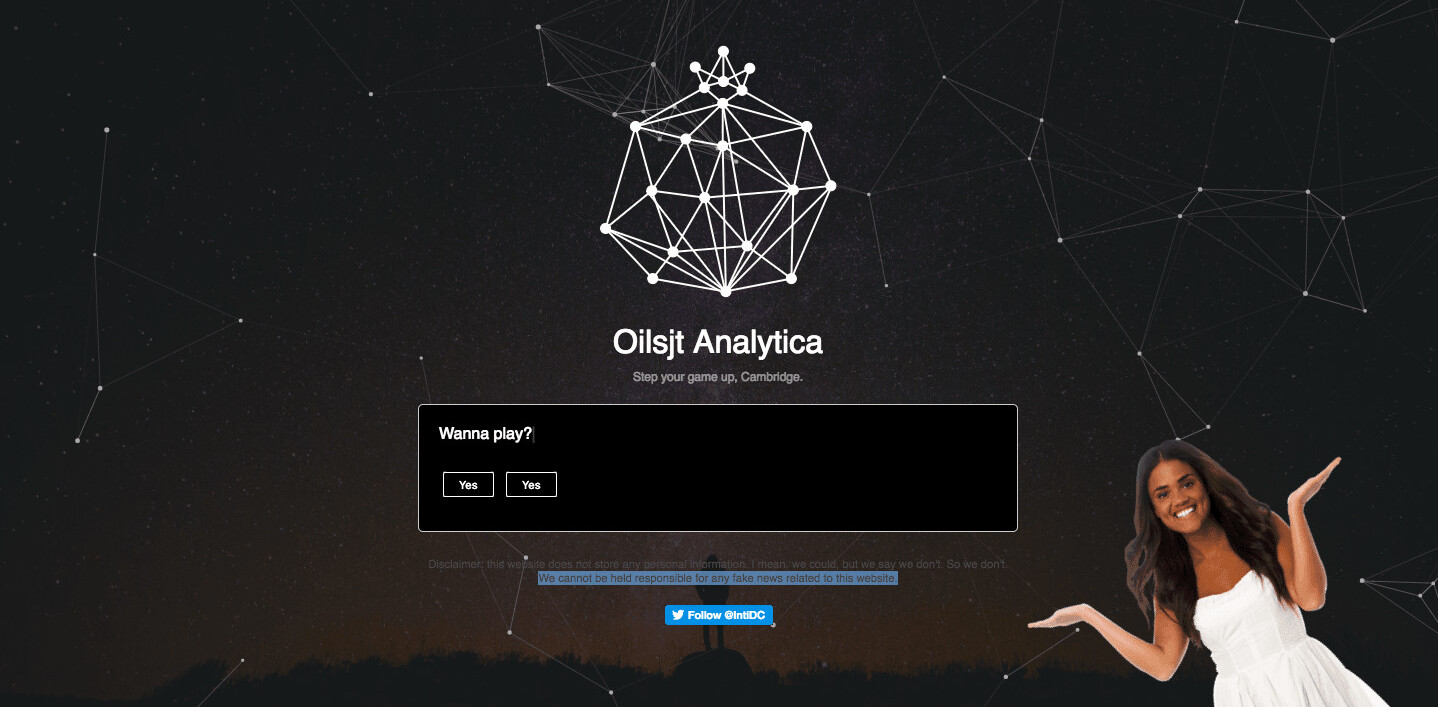
I’ve been getting up and giving talks ever since I can remember. So these days, getting asked to give keynotes at amazing events like the recent Next Web in Amsterdam feels very natural and authentic. That conference organizers are willing to pay me for it, flying me around the world is like icing on the cake.
I’m often surprised by how interested people are in the subject of being a professional speaker. By observation, they seem to have a mixture of excitement and fear at the idea, convinced that our lives are all glamour (wrong!) and that because what they see on stage seems effortless, it must be super easy for us (kinda wrong). I’d really like to see more people follow their passion for communicating on stage, and so, to that end, I’d like to share my top tips for giving a great talk. I’ll discuss the professional development elements (aka how you make money) in a future post.
There are many people who are experts on public speaking in general, and I think their contributions are invaluable. In particular, I highly recommend reading Scott Berkun’s “Confessions of a Public Speaker” (which has thoroughly influenced my thinking) and two seminal blog posts by Guy Kawasaki that are as much about talks as they are about panels and moderating. I want to specifically cover what it takes to give a great conference talk here – hopefully this will help you get on your path to speaking nirvana.
Be Nervous

If you’re not nervous before a talk, you’re a douchebag. What I mean is this: even if you’ve given your talk a million times, know all your material, are hilarious and completely at ease, you should still care that your audience has a great time in your session. It really matters what people get out of your talk, and you taking that seriously is a critical reflection of your character. So, you should be nervous. But there is a difference between you being nervous and your audience knowing that you’re nervous. Don’t use stupid tricks like imagining everyone naked. Just practice covering your “tells”, and no one will ever know. The audience’s satisfaction is the only thing that matters – the more you think of them as your customer, the better you’ll be.
Know Your Material, Never Read
I can’t stress this enough: you need to know your material. The better you know it – the through-line, the anecdotes, the punch lines, the more confident you’ll be. You should never memorize – ever. It comes across instantly – and if you end up giving a talk multiple times, memorized talks will seem wooden. However, you should know your material well enough that nothing will faze you. Also, never let anyone else create your presentations for you – with the exception of custom graphics. If you aren’t elemental in the creation of the content, the audience will know you’re reading someone else’s work.
Something will Go Wrong. Deal.
Anything that can go wrong, will. Be ready to give your talk without slides, have 2 backups (especially important if you have video or are using keynote), and upload everything to Dropbox for easy retrieval. Always show up an hour before so you can confirm the tech, and make sure at least one version is pdf. If you can, bring your iPad and VGA dongle as the main presentation machine or for backup — it’s very reliable. I’ve had enough catastrophic technical failures to last me a lifetime, and the only thing that saves you is knowing your material.
Watch and Learn from Stand Up Comics

Stand up comedy is the AP version of public speaking. It’s the same job, but for a lot less pay, with dramatically more cocaine and far greater odds of being beaten up. Plus, stand ups have to do their job dozens of times per week, keeping it fresh every time. And that’s the reason you need to watch a lot of stand up comedy. Skip the TED talks (the content is great but they are usually one-offs) and watch Louis CK, Lisa Lampinelli, Kathy Griffin and Sarah Silverman. Get up close on their techniques, facial expressions, pacing, energy and conviction. Watch how their jokes crack them up — and then remember they’re telling that joke for at least the 30th time before that HBO special. Aspire to that level of skill.
Package for Twitter
The currency of conference speaking is tweets and follows. The more of these you get during and after your talk, the better you did. Feedback forms and ratings are awesome, but most conference organizers don’t share them with you. In order to be Twitter-friendly, you need to tell your story in a series of anecdotes (or chunks) — just like a stand up. Think about highly quotable sound bites, and divide your talk into sub sections that have demarcation points. If you can, bring it all together in the end, referencing something from the start of your talk. So a pattern you can think about is:
- Opening story (cold open, like on SNL – should be strong and immediately compelling – preferably posing a question or controversial position you’ll later prove)
- Something about you (I prefer to introduce myself after the cold open)
- Point 1
- Point 2
- Point 3
- Closing (tied thematically back to the opening)
Clearly, you can do your own version of this structure – this is just one way of thinking about it.
Intros Suck
As my layout above suggests, I don’t like introductions before I start speaking. In general, when you’re introduced at an event, the MC will read your bio from your website. This is excruciatingly boring and you should ask them to avoid doing it. You also shouldn’t start by introducing yourself – good audiences have already read your bio in the program. Start with a strong statement or challenge to the audience so you capture their attention right away. After you setup the argument, you can introduce yourself in greater detail.
It’s all About the AHa!
How you’re remembered from your talk is largely based on how many meaningful aha moments you deliver to the audience. While tweets are a great quantitative measure of your success on this vector (and be sure to track them after your talk), the qualitative measure will be understood from the type of questions, comments, etc. you receive from the audience online and off. Obviously, if you’re talking about a hot new topic (like Gamification) it’s easier to imagine aha moments for the audience, but it’s not a fait accompli. Just like when you see a musical, the “humability” of the songs is a long term success metric, so too is your aha count.
Swear Judiciously

Sometimes, you just need to swear. This should be less about your needs, and again about what the audience needs. Adeo Ressi is one of the masters of this technique – it’s useful to watch him and learn. Swearing is a jarring but effective method to wake the audience up or to make a strong point. But use it sparingly — swear more than twice in a talk and you’ll get a reputation as a foul mouthed guy.
Feel your audience
If you’re confident, you’ll know how they’re reacting. Audience members looking at their computers/iPad’s isn’t bad (remember: tweets are your currency). But fidgeting, yawning, leaving, bored energy — those are all bad signs. Even if you’re not the best at reading people, you’ll be able to pick up on the audience pretty fast. Remember the places where they became bored and work on your material.
Always be rested, fed and chilled out
This seems so obvious, but it’s amazing how many speakers don’t do a good job of caring for their pre-event health. You need to eat at least 90 minutes before your talk, but don’t eat right before or risk a sugar crash (or high). You need to be well hydrated, but don’t do a caffeine/water combo that will leave you needing to go to the bathroom mid-talk. You need to be super well rested — do not party hard the night before. And leave yourself plenty of time to get to your talk, get set up, etc. Don’t drive on busy highways right before the talk or fly in at the last minute. Unnecessary adrenaline will only make you flub your lines and miss your key points. Be relaxed, well fed and water balanced and you’ll be set for success.
PowerPoint…meh
PowerPoint sucks. It might be easy, cheap, collaborative and the devil-you-know, but there’s no getting around the fact that it sucks. The fonts, layouts and the rendering engine make your work look generic. Switch to Keynote and you get the benefits of more attractive looking presentations in every way, plus full iPad and iPhone compatibility. This includes the nifty remote feature on iPhone which is the best speaker remote ever made. I know, Keynote is not easy to collaborate on, most conferences don’t support it, and the files are huge. But if you’ve been following my tips, you’d know that these problems are irrelevant for a great speaker — it’s all about the talk.
And that’s the most important point of all — being a good speaker at conferences and events is not unlike being a great performer. You need to know your material, intuitively understand your audience, bring something new to the table, and keep yourself in great physical and mental shape to do your best. If you follow my tips, soon you’ll be well on your way to turning the occasional speaking gig into a brand and/or business – and be less afraid doing it.
Liked this? Watch Gabe Zichermann’s awesome talk from the 2012 The Next Web Conference in Amsterdam:
Get the TNW newsletter
Get the most important tech news in your inbox each week.





